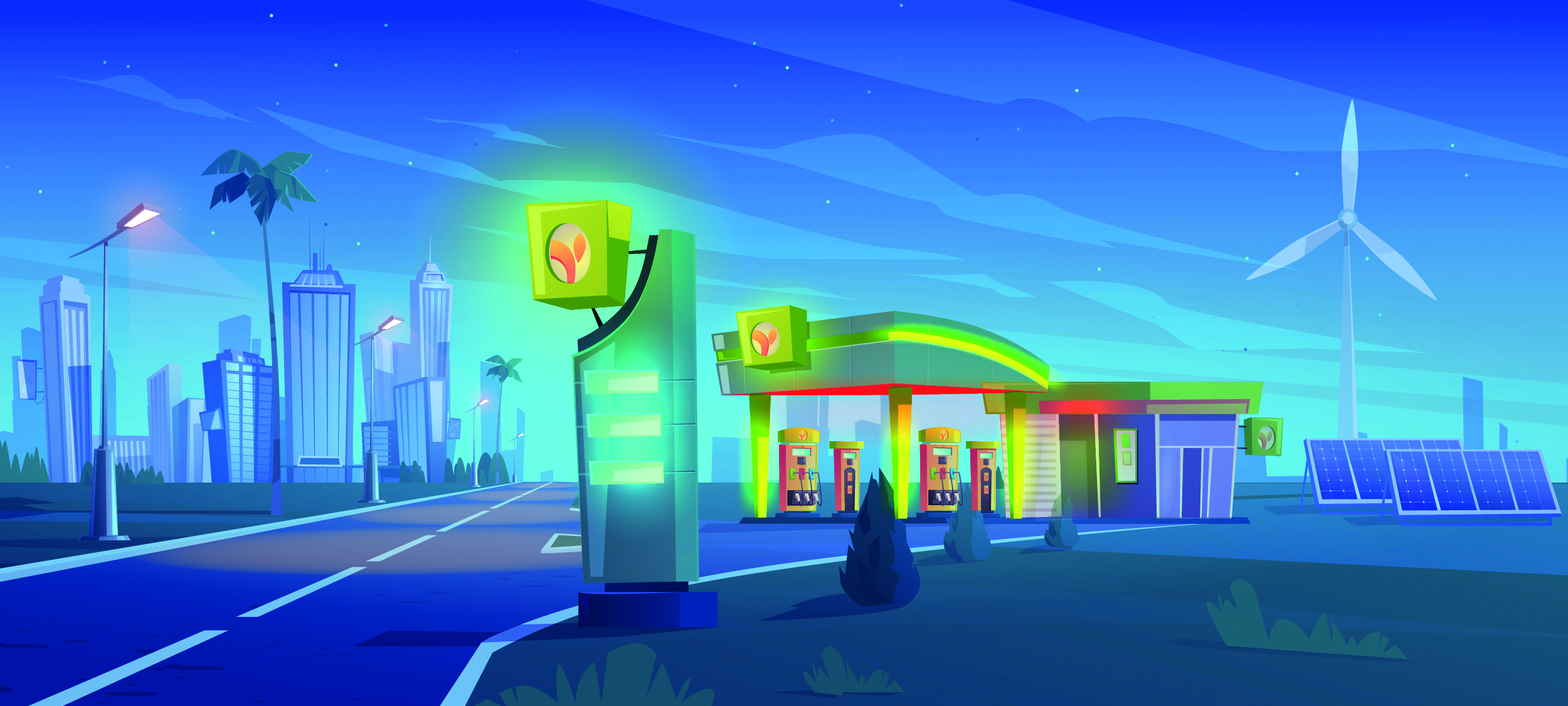 Foto: klyksun@stock.adobe.com
Foto: klyksun@stock.adobe.com
With the EU Commission’s goal of no longer allowing new internal combustion vehicles after 2035, the death of the petrol pumps we know is looming. The continuous decline in petrol stations in Germany and the steadily increasing number of electric cars on the roads and public charging stations already herald a paradigm shift in the provision of fuels. A look at the London borough of Fulham shows what charging stations could look like here in Germany in the future. There, an ordinary Shell filling station was recently converted to a purely electric charging park. But what does this mean for petrol station operators? Will this be a new way to establish a climate-friendly business model? And what does a charging experience actually look like for consumers that is just as convenient as refuelling the combustion engine? Petrol station operators are faced with the challenge of ensuring the continued existence of their business.
90 percent of all drivers do not want to return to a combustion engine after switching to an electric vehicle. In 2021 alone, more than 300,000 fully electric passenger cars were newly registered in Germany, which corresponds to an increase of 62 percent compared to 2020. Similar developments can be observed in many European countries. Moreover, electric vehicles are mainly charged when the vehicle is parked. This is especially the case at home or at work. More than three quarters of all charging will take place in the private environment in 2030, according to the National Leistelle Charging Infrastructure. The trend is clear and points to an electrified future without a need for conventional filling stations.
A guest article by Christoph Liehr for the current eMove360° magazine in german language. Read on here or download the magazine with further topics on mobility 4.0 electric-networked-autonomous free of charge.
Can charging stations reduce the CO₂ footprint?
While the first people to switch to electric cars were those who owned their own homes and had their own charging stations, the proportion of users in cities without access to private charging facilities will grow in the future. For this group, there will then be a need for a public charging infrastructure not only on a supra-regional level, but in general. This is where concepts like the converted Shell filling station come in. A charging park offers a large number of charging points that are exclusively intended for fast charging of electric cars. Typically, fast chargers with a capacity of up to 300 kW are used, which can charge an electric car’s battery to 80 percent within 10 minutes. In many places, individual charging stations are already being integrated into existing filling stations. The major oil companies have understood that a changeover is necessary. Other providers are also pushing into the market, such as EnBW with the commissioning of Europe’s largest charging park in Kamen, NRW. In the future, charging will also take place where vehicles are parked for a short time anyway, such as when shopping.
Since 2015, the federal government has been funding the construction and expansion of the required charging points for electric vehicles as part of the Electromobility Funding Directive. By the end of 2025, a total volume of around 551 million euros is to flow into the charging infrastructure. Currently, more than 13,000 charging points have already been installed. Electromobility and thus also the required charging stations actively contribute to a reduction of emissions in the transport sector and have a key function in achieving climate neutrality in transport by 2050. Not to mention the positive health effects from reduced pollutant emissions.
Opportunities offered by charging stations
The advantages of equipping filling stations with charging stations are obvious. Because of the space and structures already in place, converting petrol stations is not only more sustainable, but also more cost-effective than building new charging parks or charging stations. In addition, consumers spend more time at the charging parks due to the charging time, from which the sale of food and beverages on the premises can benefit. In addition, intelligent energy management systems offer the possibility to regulate the utilisation of the electricity grid and avoid peak loads.
The charging experience at a charging park should be at least as convenient as refuelling the combustion engine. This means that in addition to the possibility of charging electric vehicles, the time spent while charging is supplemented by other offers. Additional services such as cafés, shopping facilities and sanitary facilities, but also good lighting in winter, are of fundamental importance for a pleasant charging experience. At motorway service stations, this could be implemented through additional beverage and food offerings with cashless payments.
The political will to switch to electromobility is there. Measures such as the ban on newly registered internal combustion vehicles from 2035 or the extensive purchase bonuses underline this chosen path. It is therefore also clear that the current filling station concept cannot continue due to the foreseeable elimination of the combustion engine. Nevertheless, there will be an increasing demand for public charging stations in the future if more and more users drive an electric car in the city without a private charging facility. In the future, petrol stations can offer solutions here by redesigning existing areas for public charging concepts. Because the future is electric.
About the author: Christoph Liehr is Senior Business Development Manager DACH at Heliox. Already during his studies, he gained valuable experience in various companies in the field of electromobility and renewable energies. At the Frauenhofer Institute, Christoph was part of a project study on energy flexibility and at Whiteblue Consulting he was an analyst in the field of energy & mobility concepts. He then accompanied international customers at MAN Truck & Bus in the transformation towards alternative drives with a focus on charging infrastructure. He joined Heliox in September 2021 as Senior Business Development Manager and is responsible for the business in the DACH region with his team.